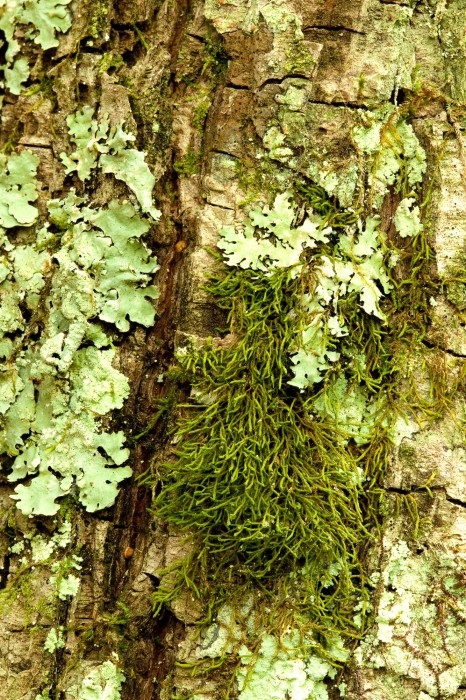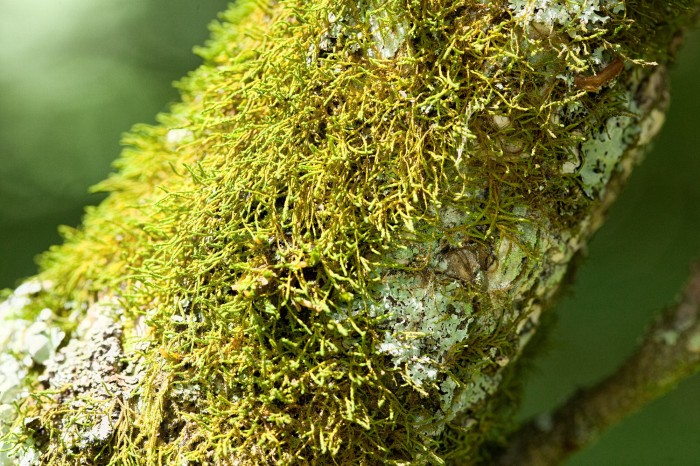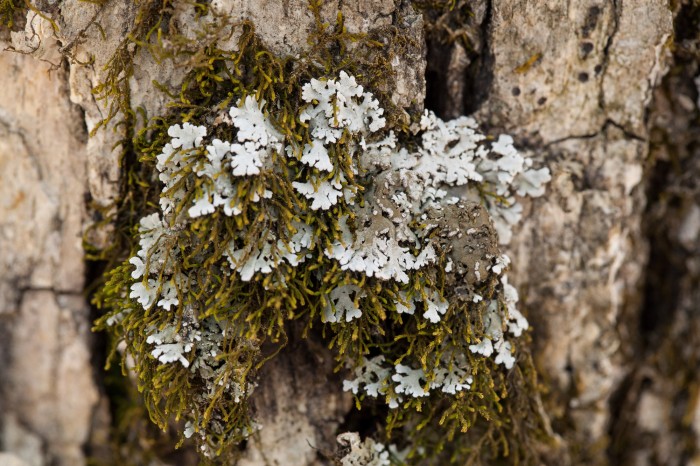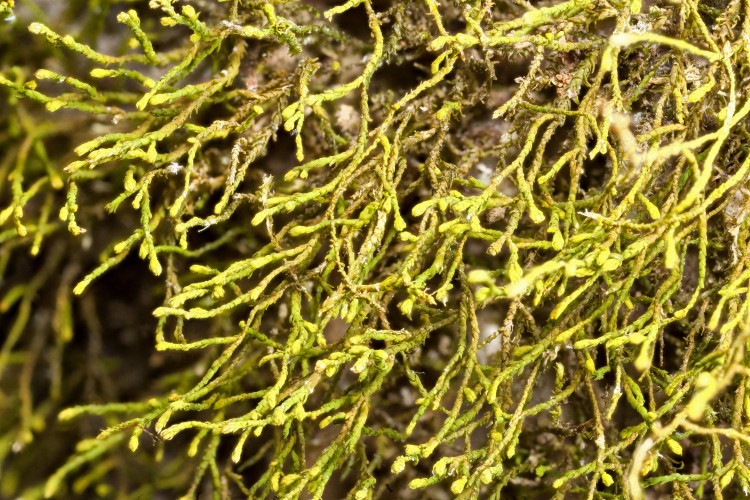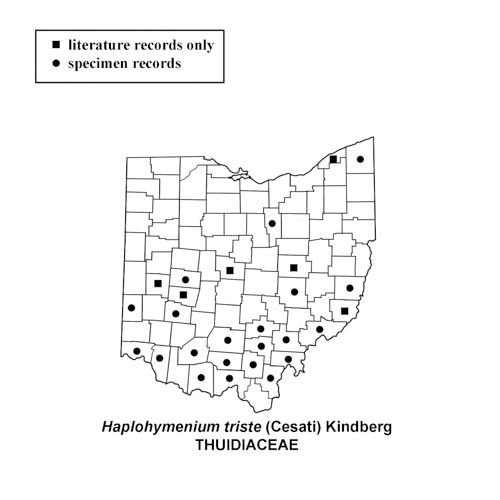Haplohymenium triste
(also called Anomodon tristis)

Haplohymenium triste on tree bark at a private nature preserve in Hocking County, Ohio. May 31 2010.
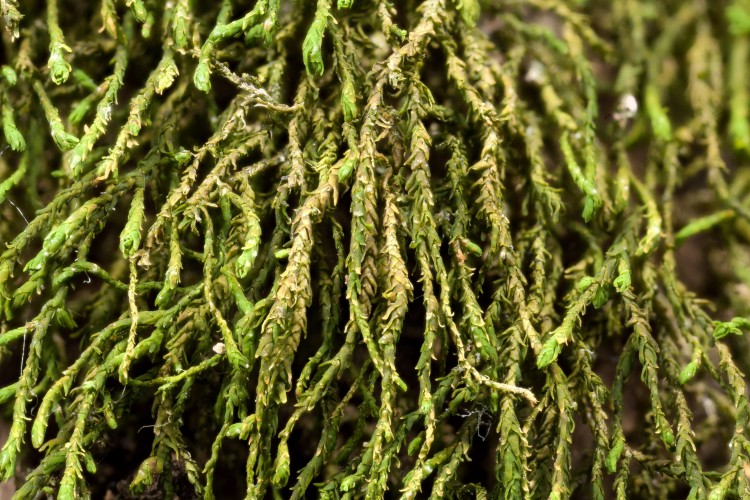
Dry Haplohymenium triste from tree along Red River, Tucker County, Virginia. Collected June 4, 2014.
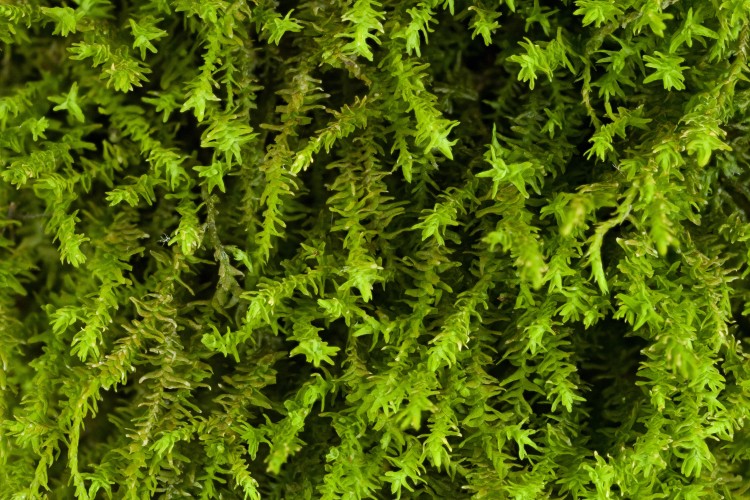
Wet Haplohymenium triste from tree along Red River, Tucker County, Virginia. Collected June 4, 2014.
How to recognize Haplohymenium triste: This moss grows in loose wiry mats. The leaves are small from 0.5 to 0.9 mm and pressed to the stem and branches when dry, spreading when wet. The leaf tips are often broken off which can be seen easily with a hand lens. Under a microscope the cells of the leaves are pluripapillose. There is a single costa to middle of leaf, and the base of the leaf is ovate while the upper part is tongue-shaped to lance-shaped. At the base of the leaf next to the costa the cells are long rectangles either smooth or with very small papillae.
Where to find Haplohymenium triste: This moss is found on trees or logs.

